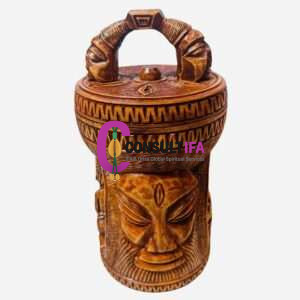Adze the shapeshifting vampire is a fascinating figure in African folklore, representing the diverse myths that are found throughout the continent. Unlike its Western counterparts, this creature is deeply rooted in cultural beliefs and practices, offering a unique perspective on the themes of life, death, and the supernatural.
This exploration delves into its origins, characteristics, and the significant role it plays within various African societies. By examining these elements through rigorous evidence analysis, this post aims to shed light on how the adze vampire not only terrifies but also reflects deeper societal values and fears. Through understanding such myths, we gain insight into human nature and cultural diversity that transcends geographical boundaries.
Key Takeaways
- The Adze vampire is a unique entity in African mythology, showcasing the rich and diverse folklore traditions across the continent. Understanding its origins helps appreciate the cultural depth and historical context of African societies.
- This mythical creature, a part of mythology and bestiary, possesses distinct characteristics that set it apart from vampires and other monsters in Western cultures, including its ability to transform into a firefly.
- The cultural significance of the Adze vampire extends beyond mere folklore, playing a role in teaching moral lessons and explaining natural phenomena within African communities. It serves as a tool for social cohesion and education.
- Methods of protection against the Adze, involving shamans and witch doctors, underline the importance of traditional healers and the spiritual beliefs in African societies. These practices also reflect the community’s collective effort to combat malevolent forces.
- The comparison between the Adze vampire and its counterparts in other cultures reveals the universal human fascination with the supernatural, while also emphasizing the unique aspects of each culture’s interpretation of vampiric beings.
- Modern interpretations and media representations of the Adze vampire offer a window into how ancient myths are being preserved, adapted, and understood in contemporary times, bridging the gap between past and present.
Understanding African Mythology
Gods and Spirits
The realm of African mythology is extensive, filled with a variety of fascinating stories. Each culture across the continent has its unique set of gods and spirits. These entities often embody natural elements or human virtues and vices.
For example, in Yoruba mythology, there is Orunmila, the god of wisdom and fate. He guides individuals on their life paths. In contrast, the Zulu people honor Unkulunkulu as the creator of humanity. Such deities play pivotal roles in shaping moral codes within societies.
Monsters Myths
Among these varied mythologies also lurk tales of monsters and mythical african creatures that serve to teach lessons or explain mysteries of nature. The Adze vampire from Ewe folklore is one such creature.
The Adze takes form as a firefly but can transform into human shape when captured. It feeds on blood and spreads disease, embodying fears surrounding illness and misfortune. This monster highlights how African cultures personify natural dangers through mythological beings.
Cultural Diversity
The diversity in African mythology reflects the continent’s cultural richness. From Egypt’s ancient gods to Madagascar’s ancestral spirits, these stories vary widely.
- Egyptian myths are well-documented, featuring gods like Osiris and Isis who represent death/rebirth cycles.
- Madagascar, meanwhile, has a strong tradition of ancestor worship where spirits actively influence the living world.
These examples show just how multifaceted African mythologies are.
Role of Adze Vampire
In understanding where the Adze vampire fits within this tapestry: It represents fear yet also serves as a cautionary tale against evil deeds. Ewe communities use this legend to instill values such as kindness towards others to avoid attracting malevolent forces like an Adze.
Moreover:
- The belief in supernatural beings like Adzes reinforces communal bonds; sharing stories fosters unity.
- It encourages vigilance among community members to protect each other from harm–whether physical or spiritual.
Understanding African mythology requires appreciation for its complexity and diversity. Gods, spirits, monsters–all play roles that transcend mere storytelling; they’re integral parts of cultural identity. By exploring these myths: We gain insights into values held by different communities across Africa while recognizing our shared humanity through universal themes found within these legends.
Origins of the Adze Vampire
Ewe Folklore
The Adze vampire finds its roots in the rich soil of African mythology, particularly within the traditions of the Ewe people from Ghana and Togo. This entity is often depicted as a malevolent spirit capable of transforming into a firefly. It seeks to drain both the physical and spiritual vitality of unsuspecting victims.
Historical records suggest that tales of the Adze have circulated for centuries among these communities. The myth likely served multiple purposes, including explaining unaccountable illnesses or deaths. By attributing such misfortunes to a supernatural creature, people found a way to rationalize their fears and uncertainties about the natural world around them.
Evolutionary Aspects
The evolution of the Adze myth can be traced back to real-life observations and inherent human fears. In regions plagued by disease or unexplained phenomena, it was common for myths like that of the Adze vampire to emerge as explanations.
- Observations: Mysterious lights at night could easily be interpreted as supernatural beings.
- Fears: The fear of unknown diseases contributed significantly to this legend’s development.
As societies evolved, so did their myths. The story of the Adze adapted over time, incorporating elements relevant to changing circumstances while retaining its core essence–a testament to its resilience within cultural narratives.
Colonial Impact
Colonialism played a pivotal role in spreading and transforming African myths like that of the Adze vampire. European colonizers often documented local legends, albeit through their own interpretive lenses. This not only led to widespread awareness but also altered perceptions regarding these indigenous beliefs.
- Spread: Through colonial writings and reports, knowledge about entities such as the Adze reached audiences far beyond its origins.
- Transformation: Colonial interpretations sometimes distorted original meanings or emphasized aspects more palatable or sensational for Western readerships.
Characteristics of the Adze Vampire
Shape-shifting Ability
The Adze vampire has a unique ability to transform. It can switch between human and bat form. This skill lets it blend into society or escape when threatened.
In its human form, the Adze mixes with locals undetected. It participates in community activities, making its true nature hard to spot. When night falls, it turns into a bat. This allows for silent, swift movement across the skies.
Blood Thirst
The primary drive of an Adze is its unquenchable thirst for blood. Unlike ordinary vampires, the Adze prefers the blood of children and young people.
It attacks at night, entering homes through tiny openings when in bat form. Once inside, it reverts to human shape to feed on sleeping victims. The process is usually lethal for those targeted.
Unique Traits
The Adze possesses strengths and weaknesses unlike any other mythical creature.
-
Strengths:
- Flight capability in bat form offers mobility.
- Ability to live among humans undetected enhances stealth.
-
Weaknesses:
- Vulnerability to fire; flames can repel or destroy it.
- Certain traditional rituals can expose or harm an Adze.
Fire acts as a significant deterrent against this creature. Villagers often use torches or keep bonfires lit at night as protection measures.
Moreover, specific cultural rituals are known to unveil an Adze hiding within a community. These ceremonies involve chants and offerings that force the creature into revealing itself.
Understanding these characteristics sheds light on how deeply intertwined the myth of the Adze vampire is with African folklore’s fabric following from its origins discussed earlier.
Cultural Significance in African Societies
Social Reflections
The Adze vampire is more than a mythical creature; it mirrors deep societal concerns. This entity embodies the fears of communities, especially regarding protection and unity. In many African cultures, safety and cohesion are paramount.
The tales of the Adze highlight these values by showcasing the chaos and danger that ensue when these principles are breached.
Communities use stories of the Adze to emphasize the importance of vigilance against threats, both external and internal. These narratives serve as cautionary tales, warning individuals about the consequences of straying from communal norms or betraying trust.
The underlying message is clear: collective well-being hinges on each member’s commitment to mutual protection and support.
Moral Education
African societies often leverage folklore like that of the Adze to impart moral lessons and reinforce social norms among younger generations. Tales featuring this vampiric entity are not mere entertainment; they carry weighty teachings on righteous conduct and community responsibility.
During rites of passage or significant communal gatherings, elders recount stories about the Adze to instill values such as bravery, integrity, and solidarity among youths. These narratives underscore how individual actions can impact community health and harmony.
Examples include:
- Demonstrating courage by confronting evil.
- Upholding honesty in dealings within one’s tribe.
- Showing loyalty to family and community members.
Through these stories, children learn that their worth in society extends beyond personal achievements; it encompasses their contribution to communal welfare.
Communal Gatherings
In many African cultures, storytelling is a vital component of communal life–especially during gatherings meant for bonding or celebration. Herein lies another layer where tales about the Adze play a critical role: fostering a sense of belongingness through shared cultural heritage.
These gatherings often feature recounting experiences with supernatural entities like the Adze vampire:
- Elders narrate encounters emphasizing collective victory over malevolent forces.
- Lessons drawn from such tales reinforce group identity along with cultural beliefs around good versus evil.
Protection Against the Adze Vampire
Traditional Methods
Communities have long used various methods to protect themselves from the adze vampire. They believed in the power of charms and rituals. People crafted charms from materials thought to repel these creatures.
One common practice was hanging masks around homes. These weren’t ordinary masks. Crafted with specific symbols, they were designed to scare off or confuse an adze.
Communities also performed rituals involving dancing, singing, and even certain foods, believing these acts could ward off evil spirits including the adze.
Another method involved using objects made of particular materials like wood or stone. It was believed that items with a sharp edge, resembling tools such as adzes used in daily life but imbued with spiritual significance, could deter or weaken an adze when placed strategically around one’s home.
Modern Adaptations
While traditional practices remain respected, modern adaptations have emerged over time. Today’s methods blend historical knowledge with contemporary understanding.
For instance, some now incorporate technology into protective practices by creating digital representations of ancient symbols and masks that were once physically hung around homes.
These are shared online as a form of communal protection against negative forces akin to the adze vampire myth.
Others focus on psychological approaches, emphasizing the importance of mental strength and community support as shields against fear which might attract malevolent entities according to folklore belief systems.
In essence, both traditional and modern methods serve not only as means for physical protection but also foster a sense of unity within communities facing common fears.
The Role of Shamans and Witch Doctors
Identifying Adze
Shamans or witch doctors hold a crucial role in African communities, especially concerning supernatural entities like the Adze. They possess unique abilities to identify these vampires among people.
These spiritual leaders use rituals and divination to detect the presence of an Adze. Their knowledge is vital for the safety of their community.
They often rely on signs or omens that point to someone being under the influence of an Adze. It could be sudden illness, unexplained misfortune, or changes in behavior.
Once identified, they proceed with caution and wisdom to address this threat.
Rituals Performed
To combat or control an Adze, shamans perform various rituals aimed at protection and cleansing. These ceremonies might involve chanting, dancing, and the use of sacred objects believed to have power over spirits.
Through these rituals, individuals are protected from becoming victims of an Adze.
For those accused of being an Adze, there’s a process for cleansing that involves both physical and spiritual healing practices.
This might include baths in herbal concoctions or specific rites designed to expel the evil spirit from them.
Herbal Medicine
The knowledge shamans possess extends beyond identifying supernatural threats; they are also adept in herbal medicine. They use plants with medicinal properties as part of their ritualistic practices as well as for treating ailments caused by natural means or supernatural interference.
Herbal remedies prepared by these healers can serve dual purposes: curing physical illnesses and providing protection against spiritual entities like the Adze vampire.
The effectiveness of these herbs is rooted not only in their intrinsic qualities but also in the belief system surrounding their usage.
Spiritual Guidance
In dealing with threats posed by entities such as the Adze vampire, shamans offer more than just immediate solutions; they provide ongoing spiritual guidance to individuals and communities alike.
Their wisdom helps people understand not just how to protect themselves against such beings but also how living harmoniously can prevent future occurrences.
Through teachings about respect for nature and adherence to ancestral customs, communities learn strategies for coexisting peacefully with both seen and unseen elements within their environment.
Comparisons with Vampires in Other Cultures
African Vampire Myths
Other African cultures harbor vampire myths that focus more on the undead or demonic aspects without the transformative agility of the Adze.
For instance, the Obayifo of the Ashanti people in Ghana shares similarities with the Adze, such as blood-drinking, but it is often described as a witch-like being that can leave its body at night to prey on its victims.
The Sukuyan of Trinidad, believed to have origins in West African mythology, is another example where the vampire-like creature can change form but does so by shedding its skin to fly in search of blood, rather than transforming into an insect.
These variations highlight a rich diversity in vampire folklore across Africa, with each culture adapting the myth to its own environment and societal concerns, yet the Adze stands out for its unique blend of stealth and shape-shifting abilities that are not as emphasized in other myths.
Global Myths
The Adze vampire shares similarities with vampire myths worldwide. Yet, it stands distinct. Across cultures, vampires are often depicted as night creatures that feed on humans.
The archetype of the vampire is well-known in Europe, similar to the Adze in that they both target humans. However, their origins and roles within society show significant differences.
While European tales often depict vampires rising from the dead, the Adze originates from a living human or witch transforming into a creature.
This distinction highlights diverse cultural fears and beliefs about death and witchcraft.
Cultural Exchange
Vampire lore has evolved through centuries of cultural exchange. Stories of mythical monsters like the Adze have spread far beyond their origins, influencing global perceptions of these creatures.
In Asia, for instance, vampire-like entities exhibit unique characteristics shaped by local beliefs and folklore. Unlike the transformative nature of the Adze or the undead European vampire, Asian myths often feature spirits or demons preying on humans’ life force rather than their blood.
This exchange has not only enriched global monster lore but also underscored common themes across cultures: fear of death, mistrust towards outsiders or unknown forces, and caution against moral transgressions portrayed through monstrous figures.
Final Remarks
The exploration of the Adze vampire within African mythology reveals its profound impact on cultural practices, beliefs, and storytelling across various African societies. This entity not only embodies the fears and anxieties prevalent in these communities but also serves as a testament to the rich oral traditions that have preserved such folklore through generations. By comparing the Adze vampire to its counterparts in other cultures, one appreciates the universality of mythological themes while recognizing the unique aspects that differentiate them. The role of shamans and witch doctors in combating this menace highlights the importance of spiritual leaders and healers in maintaining societal balance and protecting against malevolent forces.
As modern interpretations continue to evolve, they offer new lenses through which to view and understand the significance of these ancient myths. The enduring fascination with vampires, including the Adze, underscores humanity’s perpetual quest to explore the unknown and confront the darkness within and without. Readers are encouraged to delve deeper into African mythology to uncover more about its creatures, legends, and the lessons they impart on courage, community, and resilience.
Frequently Asked Questions
What is an Adze Vampire in African Mythology?
The Adze vampire is a supernatural being from African mythology, known for its ability to transform into a firefly. It drains both the blood and life force of its victims when in human form.
Where does the concept of the Adze Vampire originate?
The concept originates from the Ewe people of Ghana and Togo. It reflects deep-rooted beliefs in witchcraft and spiritual entities within these communities.
How does the Adze Vampire differ from typical vampires?
Unlike traditional Western vampires, the Adze can morph into a firefly to move undetected. Its diet also includes spiritual energy, not just blood.
What role do shamans play concerning the Adze Vampire?
Shamans or witch doctors are pivotal in identifying, combating, and protecting communities from Adzes through rituals and traditional medicines.
Can you protect yourself against an Adze Vampire?
Protection involves magical amulets, specific rituals performed by shamans, and adherence to certain community guidelines designed to ward off evil spirits including the adze.





